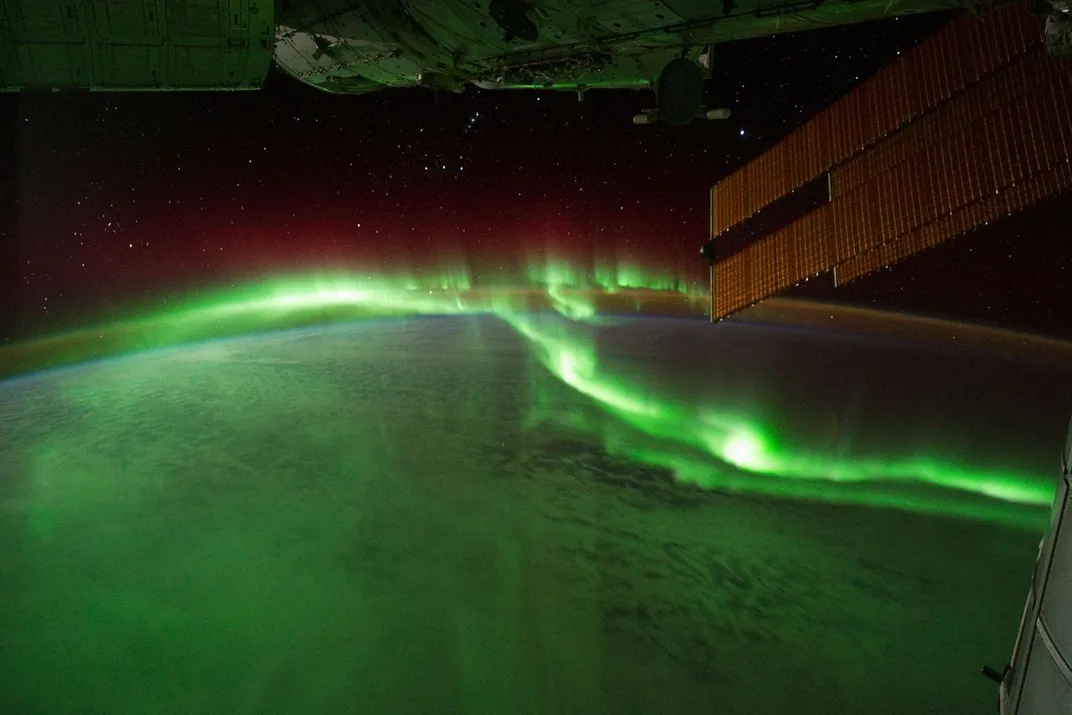The Solar Storm That Nearly Set the Cold War Ablaze
How radio interference from a 1967 solar storm spooked the U.S. military—and launched space weather forecasting
/https://tf-cmsv2-smithsonianmag-media.s3.amazonaws.com/filer/b5/31/b53119e9-cab1-425e-85fb-07ceca8e55a7/639304main1_20120416-m1flare-670.jpg)
A storm on the sun, quietly exploding millions of miles away, may at first seem singularly irrelevant to those of us who live on Earth. But a series of huge solar explosions in late May 1967 posed very immediate threats to Earthlings when they sped toward our planet and, within minutes, jammed U.S. military radio signals. Though long-forgotten today, these colossal tempests launched the future of modern space weather forecasting.
Given that it was the height of the Cold War, it would have been logical for the U.S. to interpret such radio interference as acts of maliciousness that would have provoked retaliatory military action—were it not for a space weather monitoring program fortuitously established by the U.S. Air Force earlier that decade. This new program helped the military identify the disturbance as a solar storm rather than Russian malfeasance, and prevented heightening of tensions during this tenuous political time, a team of researchers report this week in the journal Space Weather.
“It was important militarily to know whether or not radar and radio technologies were being actively jammed or if it was nature doing the jamming,” says study lead author Delores Knipp, a military veteran and space weather researcher at the University of Colorado Boulder. “In this case, it was an unprecedented radio burst from the sun.”
These solar storms—caused in part by so-called solar flares, or explosions of electromagnetic energy that generate fluctuations in Earth’s electromagnetic fields—contained the largest recorded solar radio bursts of the 20th century. At the time, the storms were visible to the public as impressive auroras in the sky. But they quickly faded from public memory, and reports of the events languished as classified military documents, collecting dust.
Nearly 50 years later, many of those documents have become declassified, allowing Knipp’s team of researchers and military veterans to produce the first ever comprehensive report of what unfolded during the storms, and how those events helped shape modern space weather exploration. Ever since the storms, the U.S. Department of Defense has largely funded this area of research. “It provides such a rich background that explains how our space weather forecasting enterprise developed,” says Knipp.
The 1967 storms were so large that the aurora borealis—generally only visible at far northern latitudes around the polar circle—dipped as far south as New Mexico and Central Europe, Knipp’s team reports. Were it to happen today, such an event could have been catastrophic. The burst would disrupt Global Positioning System (GPS) units—not only disorienting smartphone users, but also potentially disturbing banks and other financial institutions that rely on GPS for time synchronization, the authors write. Airplanes would also lose radio connection and power grid transformers could overheat, causing power outages.

Since 1967, researchers have developed space weather monitoring satellites and observational spacecraft that continually monitor the sun, allowing scientists to better predict these storms and warn military or power grid operators of the impending threat. Today, researchers can detect when storms might erupt by monitoring the sun’s magnetic field, since solar storms tend to originate in areas where the field becomes twisted and kinked.
Knipp compares the sun’s magnetic field to the kinks of a rubber band coiling in on itself. “If you have a rubber band and start twisting it with your fingers, it likes to turn into a knot,” she says. “The magnetic field does the same thing.” In the case of the sun, the knot eventually will burst open, and the release of that energy into space creates the solar storms, Knipp says.
An explosion comparable in size to the 1967 storms hasn’t hit earth since 2003, when massive solar eruptions sent auroras as far south as Florida and Texas, causing temporary power outages in Sweden and re-routing airplanes, according to NASA. Now, nearly 15 years later, the threat of such storms just isn’t on the radar for most people, says Mike Hapgood, a planetary scientist at the Science and Technology Facilities Center in England and editor of the team’s report in Space Weather.
“We have had this long period of benign conditions and there are a lot of people getting used to that,” says Hapgood. “It’s good to remind people of what has happened in the past, because that shows what can and will at some point happen in the future.”
Daniel Baker, a planetary and space science researcher at the University of Colorado Boulder who was not involved in the study, agrees that the public should be aware of these events and says that Knipp’s report provides a strong argument for continued support from the Department of Defense and other international groups for upgrading space weather monitoring instruments.
“We have eyes in the sky more substantially now than we did back then,” Baker says. Still, many of those satellites and spacecraft are aging and will require additional funding to upgrade and keep them in working condition, he adds.
“We are in a much better situation than we were decades ago and we need to make sure we maintain that type of awareness,” says Baker.